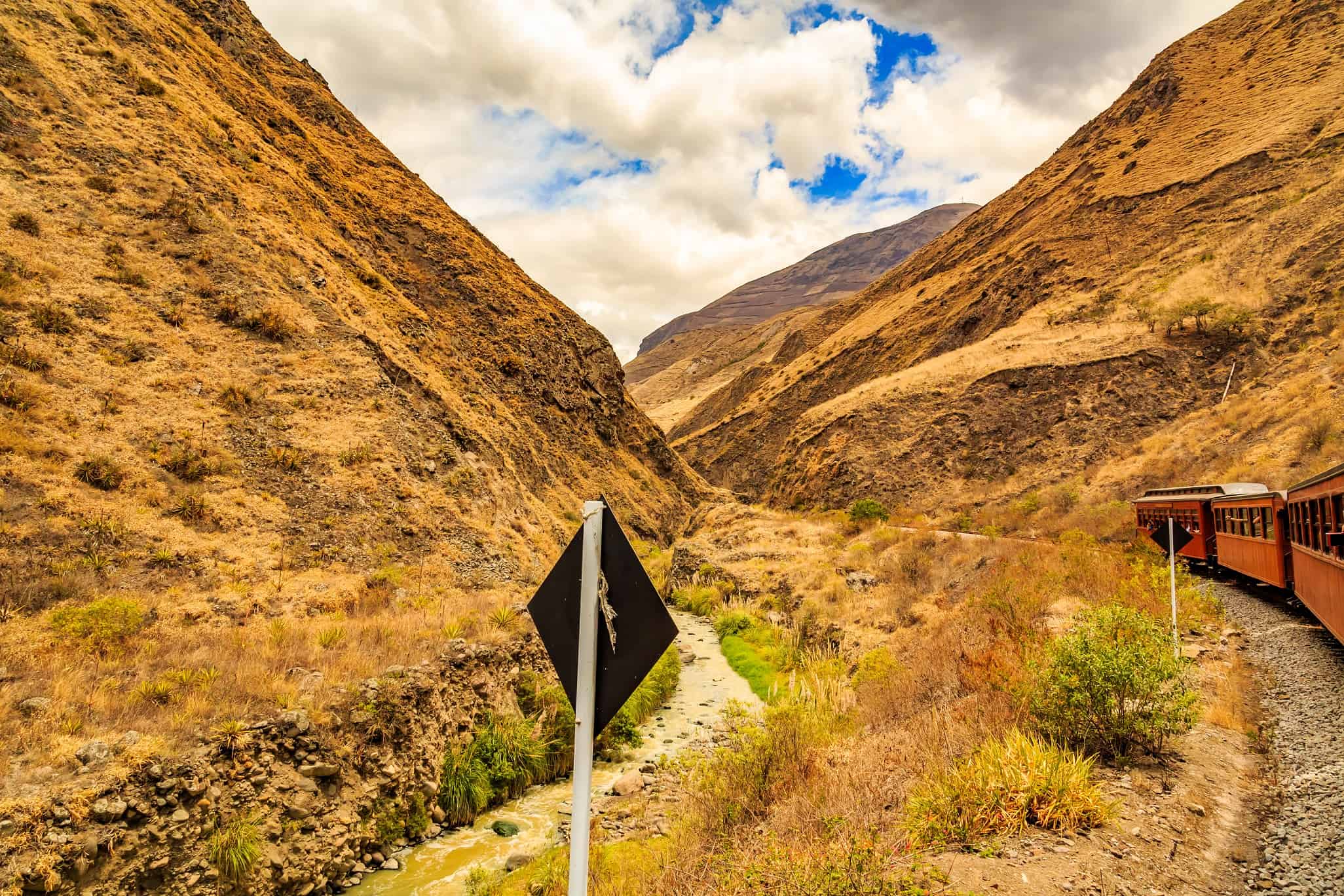The train doesn't creak into motion - it snaps. Passengers laugh and look around nervously as the steel wheels jolt forward. We're about to seesaw 800 metres down the Devil's Nose, a notorious railroad in the Ecuadorian Andes that swarms with legends and a fatal past.
The dark history of the Devil's Nose
 Alison Karlene Hodgins
Alison Karlene Hodgins
Built between 1899 and 1908, this railroad has a convoluted history. In 1895, then-President Eloy Alfaro faced fierce rebut when he announced his plans to slice a railroad through the Andes, connecting Quito and Guayaquil. El Nariz del Diablo (the Devil’s Nose) was the most technically challenging aspect of the route. Engineers devised a plan to create a Z-shaped switchback, through which the train would pull forwards, backwards, and then forwards again to descend and climb the mountain at a 3.5 per cent gradient. However, building the track on a near-vertical rock face was deadly work, earning it the reputation as “the most difficult railroad construction in the world.”
Alfaro drew 4,000 people from Jamaica and Puerto Rico with promises of gold and fruit. Instead of arriving to an endless paradise, they were forced to construct the railroad. Over half of them died from malaria, dynamite explosions, poisonous snakes, yellow fever, altitude sickness and the unavoidable danger of building on a sheer cliff-face. Because of the many deaths, the railroad was named the Devil’s Nose.
But there’s another theory. Alfaro was known as an unreligious man in a heavily religious country. Local people claimed he sold his soul to the devil, and as long as the track continued to be built, people would keep dying. It was whispered that Satan himself didn’t want a railroad to be built there; that the track was cursed.
 Alison Karlene Hodgins
Alison Karlene Hodgins
In 1997, landslides from El Nino devastated the track and rendered it unusable. In 2000, the Devil’s Nose reopened as a tourist attraction. Visitors perched on the top of the old steam engine train, surveying the stunning scenery with fresh wind in their faces. Derailings were frequent annoyances, but there were more pertinent dangers on the tracks.
Profits from the train tour were given to the small communities in the area. Among other things, the communities used the funds to install telephone wires. In 2007, a group of Japanese tourists were sitting on top when they were caught in a cable. Although the details are fuzzy, it’s alleged that two of them died.
A Renewed train ride
 Alison Karlene Hodgins
Alison Karlene Hodgins
Today, the steam engine and rooftop railings have been replaced with new coaches and a diesel and electric locomotive from France. It doesn’t exude the same feel as an antique steam train; it is certainly more like a tourist attraction. Passengers are no longer allowed to sit on top, although they can lean out the windows. It is still a unique experience and much safer now.
I gaze out the open window at stubby brown bushes and prickly cacti growing on the Andes mountainside. High above, I trace the outline of the Pan-American Highway crisscrossing the landscape. Far below, a murky river runs, tinted yellow from nearby sulphur mines. A perilous fall straight down sends my heartbeat spiraling.
We screech to a halt at the base of the mountain, where we disembark for a photo-opt. Ten minutes later, we’re back on board, travelling the short distance to Sibamba Station.
Performing amongst the Andes
 Alison Karlene Hodgins
Alison Karlene Hodgins
Local indigenous people greet us with an outdoor dance performance. They pull us in, twirling and spinning beneath the mountain. We order coffee at the cafeteria and learn about local culture at the museum.
After an hour, we’re back on board, chugging up to Alausi where our journey began. With such dramatic landscape, it’s easy to imagine how the Devil’s Nose claimed so many lives.
 Alison Karlene Hodgins
Alison Karlene Hodgins
Let's hope the curse has finally lifted.
When you go:
Fast facts
Duration: 2.5 hours round-trip including two stops
Distance travelled: 12 kilometres (one-way)
Cost: $25
Departures: 8 a.m. & 11 a.m. every day except Monday
(third tour at 2 p.m. on select holidays)
Commentary: Spanish and English
Pro tip: For the best views, sit on the right.
Website: trenecuador.com
 Alison Karlene Hodgins
Alison Karlene Hodgins
Disclaimer: This experience was part of a press trip provided by Copa Airlines, Mintur, Mashpi Lodge, Casa Gangotena, Quito Turismo, SLT Ecuador, Tren Ecuador and Pro Ecuador. All opinions are my own.
Looking for a flight to Ecuador? Copa Airlines connects Montreal and Toronto to Quito and Guayaquil via Panama City, the “hub of the Americas.”
Related content on CanadianTraveller.com


